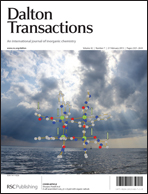The reactivity of the phosphinito bridged Pt(I) complex [(PHCy2)Pt1(μ-PCy2){κ2P,O-μ-P(O)Cy2}Pt2(PHCy2)](Pt–Pt) (1) towards Au(I) and Ag(I) electrophiles was explored. Treatment of 1 with AuCl yielded the dichloro Pt(II) complex [(Cl)(PHCy2)Pt(μ-PCy2){κ2P,O-μ-P(O)Cy2}Pt(Cl)(PHCy2)] (4), while [Au(PPh3)Cl] in thf (or toluene) caused ligand exchange resulting in the formation of [(PPh3)Pt(μ-PCy2){κ2P,O-μ-P(O)Cy2}Pt(PHCy2)](Pt–Pt) (7) and [(PPh3)Pt(μ-PCy2){κ2P,O-μ-P(O)Cy2}Pt(PPh3)](Pt–Pt) (8). With [Au(PPh3)OTf] (independently from the solvent) or with [Au(PPh3)Cl] (only in dichloromethane), reaction with 1 gave [(PHCy2)Pt1(μ-PCy2){κ2P,O-μ-P(O)Cy2}Pt2{μ-Au(PPh3)}(PHCy2)]X(Pt–Pt) ([6]X, X = OTf, Cl) clusters in which the [Au(PPh3)] moiety bridges the μP–Pt2 bond. The [Ag(PPh3)]+ electrophile attacks complex 1 selectively at the Pt2–μP bond to afford, at low T, the cationic cluster [(PHCy2)Pt1(μ-PCy2){κ2P,O-μ-P(O)Cy2}Pt2{μ-Ag(PPh3)}(PHCy2)]+(Pt–Pt) (10++) in which the [Ag(PPh3)]+ moiety bridges the μP–Pt2 bond. Clusters analogous to 10++, but without PPh3 bonded to Ag, are obtained from reactions of 1 with AgOTf, AgBF4, AgClO4 and AgCl.
 towards Au(i) and Ag(i) electrophiles](/en/Image/Get?imageInfo.ImageType=GA&imageInfo.ImageIdentifier.ManuscriptID=C2DT32393A&imageInfo.ImageIdentifier.Year=2013)

 Please wait while we load your content...
Please wait while we load your content...